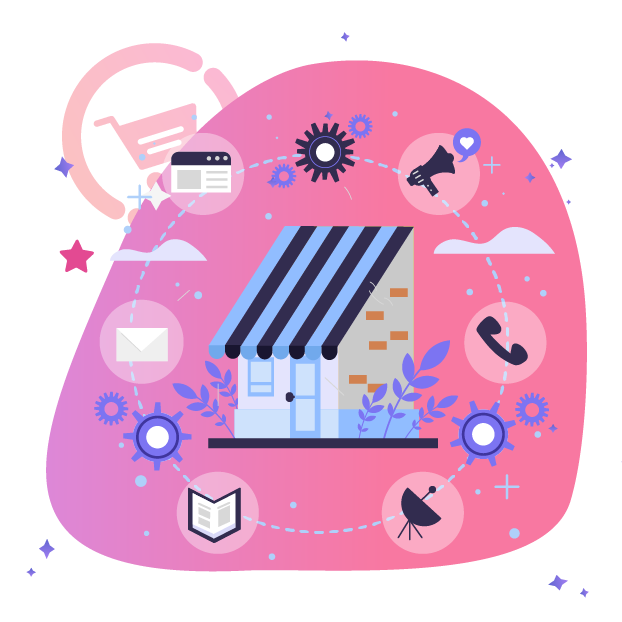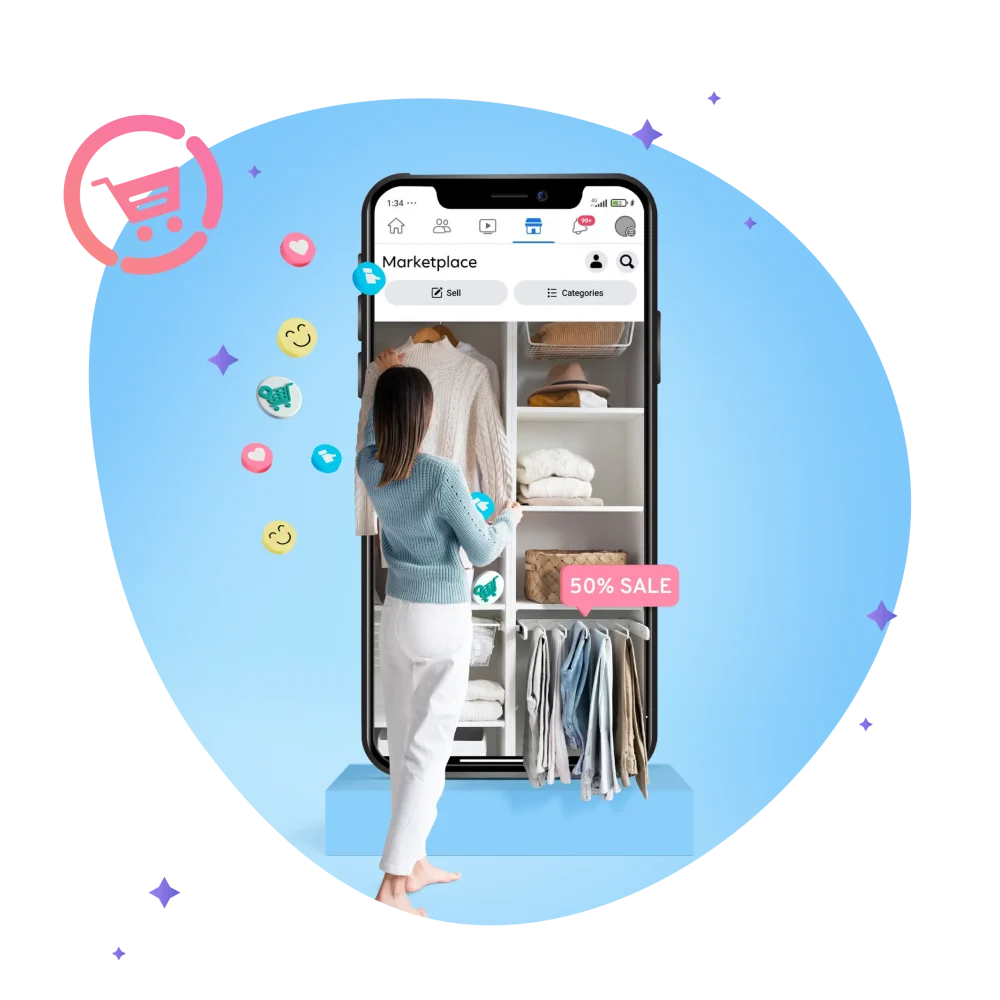
How to make money on social media in South Africa: Small Business Selling (2023)
May 24, 2023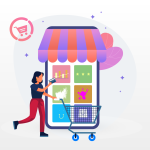
Apps for eCommerce | Evolve your store to grow your business
July 13, 2023As the eCommerce landscape continues to boom globally, its growth does not necessarily mean the end of traditional physical retailers as you know them. In fact, in recent years, brick-and-mortar retailers remained tough competition.
There’s just something unique to the experience of being able to see and touch items in-store, which keeps customers coming back for more. On the other end of things, there are an estimated 2 billion digital buyers worldwide, making a clear case that eCommerce is here to stay.
The question then is, can traditional retail and eCommerce co-exist, and if they can, how does eCommerce for retail work? Time to take a closer look at what makes them different and how you can innovate your eCommerce model to make both work for you.
The basics of retail and eCommerce
Before getting to the more in-depth takeaways of using eCommerce from a retail perspective, it’s important to look at how both of them function independently. This makes it easier to understand the role that each plays in the entirety of retail growth.
eCommerce sales and how they work
When it comes down to how eCommerce sales work, it’s all about any sales made through an online store like Netcash Shop. In general, eCommerce logistics supply chains come with more options for stocking and shipping products.
Two of the most prominent models are dropshipping and direct-to-consumer (DTC). When dropshipping, your eCommerce store sells products from a third party, such as wholesalers. On the other hand, direct-to-consumer involves selling items directly to your customers, skipping any third party.

Retail sales and how they work
Retail sales happen quite differently than eCommerce sales, as this involves the sale of items from a single physical point such as a store or shopping mall. They also include smaller storefronts, such as pop-up stores and farmers’ markets.
The basic premise behind retail selling is that a customer can physically interact with a product before choosing to buy it. Buyers can touch an item and read product descriptions, which, according to a State of Retail Survey, is why 80% of all shopping still happens in stores.
As for supply chains, retailers are the final link before an item reaches consumers. This means that buying from a retail store doesn’t come with waiting times or shipping costs, and it makes returning an item easy to do.
eCommerce vs retail: Are they really that different?
So, if the purpose of eCommerce and retail is essentially to provide a customer with a product or service, how different can they be? Yes, there’s the way something is bought, digitally or physically, but the two offer several other significant differences when you dive deeper.

Critical differences between retail and eCommerce
So, what is the difference between retail and eCommerce? Think about the last time you went and bought something from a store. You had to travel to a physical location, browse products, interact with a salesperson, and after buying, travel back home.
Now, picture the last digital purchase you made. Sitting comfortably at home, you went directly to your favourite online store’s website, browsed for the item you wanted, completed the purchase, and patiently waited for delivery.
At first glance, that’s already a majorly opposite experience. But let’s see these differences between eCommerce and retail from both consumer and business perspectives.
Shopping experience
Begin with the basics; in this case, it’s the shopping experience. From the example above, the defining feature of a successful selling model is how easy it is for someone to buy from you. Aside from that, how simple it is to return an item and how an item is marketed and displayed also play their parts.
Where shoppers at a physical store can interact with a product to decide on things like quality or appeal, online shoppers don’t have that luxury. Instead, buying something from an eCommerce store means using product descriptions, images, and other customer reviews to fuel their decision.
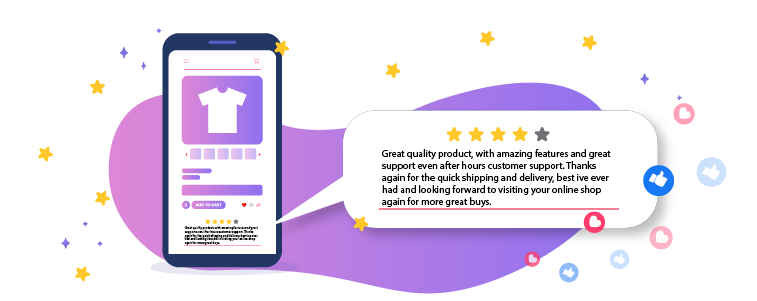
Accessibility
This is where eCommerce has the edge over physical retailers. Whereas retail offers limited accessibility in terms of region and open hours, eCommerce provides customers with a far wider geographical service and is always available 24/7.
Customer service
When it comes to customer service, retail stores have an advantage because they can offer real-time proactive customer support. This is done through the sales assistants who provide help in every part of the buying process.
However, eCommerce platforms take on a more reactive approach to this because a customer does not necessarily need the help of an assistant. Keep in mind that having an effective online support team, nonetheless, is a big part of the shopping experience.
Convenience
It’s not surprising that online shopping hinges on its convenience because the only thing you really need to complete your purchase is an internet connection. This makes buying something anywhere, anytime, a possibility, saving you precious time.
This also potentially saves you travelling expenses, but you often sacrifice instant gratification for this convenience. You don’t have to wait for shipping with physical stores and can take your item home immediately.

Investment
From a business perspective, setting up an online store is far less expensive than operating a physical brick-and-mortar location.
With eCommerce, your financial investments will go to elements like which eCommerce platform you choose, its domain hosting, and marketing tools. As for physical retailers, the investment costs are higher, thanks to things like rental and leasing costs, insurance expenses, and marketing costs.
Day-to-day operations
Managing and operating a storefront requires much more manual input than an eCommerce shop. This includes employee management and hiring, inventory maintenance, and changes in supply and demand. Whereas with eCommerce, the majority of the day-to-day processes can be automated through the use of ecommerce tools.
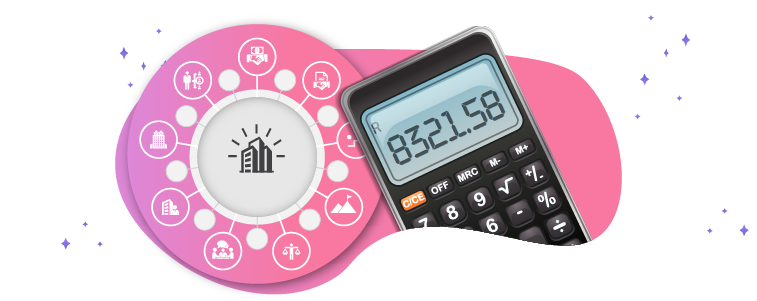
Selling through multiple channels
These days most businesses are taking an omnichannel approach to try and increase sales. Omnichannel marketing allows businesses and brands to sell across multiple platforms. It also ensures that customers can seamlessly interact with your brand across these different platforms.
However, you’d want to take a slightly different approach when it comes to retail or eCommerce stores. For example, most small businesses that rely on local support may not need to start selling online, as advertising through social media can generate enough buzz for them. That said, it may also be an added layer of complexity and expenses that small businesses do not need.
Nowadays, medium-sized and larger brick-and-mortar businesses are warming up to omnichannel retailing, such as creating an online store. Doing so allows them to reach more consumers beyond geographical locations. In conclusion, it’s not an essential business model for retailers.
For eCommerce businesses, omnichannel selling has become pretty much a default business model. It allows you to sell beyond your online store via channels like social media and smartphone apps.
Overlooked costs
We’ve already discussed the initial investment, but operational costs continue after that. The cost of maintaining and operating a business is often overlooked. The purchase price of an asset plus the costs of operation is known as the total cost of ownership (TCO). That said, the TCO differs between retail and eCommerce.
For eCommerce businesses, the TCO involves calculating the day-to-day operations of your website. These can range from maintaining a domain name, advertising campaigns, social media management, and subscription fees from a developer or eCommerce provider.
As for retail, the majority of the overlooked costs stem from maintaining a physical store. These include rental fees, cash registers, POS terminals, and business insurance, among others.
Business-specific setbacks
Both retail and eCommerce businesses are no strangers to setbacks. There are limits and risks specific to each one of them.
The risks of retail stores are well-known by the general public, such as theft, fraud, economic recession, and customer injuries, for example. However, with eCommerce on the rise, and technological advancements, new limitations are popping up in the retail sphere.
So, retailers have to do way more to keep up with our current modern age and to compete with eCommerce stores when it comes to product availability, customer satisfaction, and shipping timelines.
The risks and limitations of eCommerce mainly center around cyber security. Data breaches, hacking, privacy issues, credit card fraud, customer disputes, and chargebacks are all unique to eCommerce businesses.
Reachability
There are way more restrictions on customer base and growth in retail. Reach is limited depending on your location and the size of your business. With eCommerce, you’ll have a much wider customer base and reach without restrictions such as physical location.
Also, with dropshipping, shipping, and delivery, it’s possible to sell to customers globally or country-wide. Finally, an eCommerce website allows you to reach new audiences through various online channels. You can target your audience more effectively using digital marketing tools.
Is it possible to integrate eCommerce and retail?
As easy as it is to jump to a conclusion about whether to opt for traditional retail or eCommerce, it’s important to consider the possibility of integration. Big words aside, in the 2020s, it’s no longer really a case of going retail versus eCommerce but rather of adding eCommerce to your retail business.
How? Think about the rise of the internet, online reviews, online retail, and cloud-based software. Today, there’s a growing eCommerce app landscape because of these varying digital influences. This landscape is giving way to a multi-channel shopping experience.
And let’s not forget the inclusion of an online retail extension that many brick-and-mortar businesses already have. Now, somewhere in between all of this lies the integration of traditional retail elements and eCommerce aspects.
So, let’s find the boundary-breaking point where a joined approach to eCommerce for retailers offers the ultimate solution.

Blurring the digital lines between traditional retail, online retail, and eCommerce
Wait. Isn’t eCommerce the same as online retail? Not entirely. You see, while the difference between traditional retail and eCommerce is easy to spot, the one that exists between eCommerce and online retail is a bit more tricky to see.
Online retail is not a separate entity from eCommerce, whereas traditional retail is. In fact, online retail is, at its core, just another type of eCommerce business model. These include business-to-business (B2B), business-to-consumer (B2C), and consumer-to-consumer (C2C).
In these three retail models, there are six different types of eCommerce, namely:
- Online retail – This involves the selling of a product from a business directly to a consumer.
- Wholesale – Here, the focus is on selling products in large quantities from wholesaler to retailer.
- Services – Includes any type of service in exchange for money.
- Digital products – Includes, for example, ebooks and online courses available to buy online.
- Subscription products – Here, typically, you’ll find services like Spotify or Apple Music and even B2B SaaS tools.
- Marketplaces – Bases on C2C retail this includes online marketplaces like OLX.
Clearly, there is a spillover between what people expect from the traditional shopping experience and eCommerce. So, if online retail exists, does retail eCommerce?

What is retail eCommerce?
Retail eCommerce, AKA e-retail, is where a retail business or individual sells products through an online store.
An e-retailer can exist with a purely digital presence without a physical storefront, or it could be a brick-and-mortar store with an online presence. Two of the most prominent models of retail eCommerce are B2B and B2C operations.
If you think about the different technological aspects of eCommerce, it’s actually no surprise that some of the biggest retailers now use eCommerce as a means to an end. The best example of this is the clothing and sportswear brand Nike.
Are retailers using eCommerce? An Example
The short answer is yes. Retailers are making use of eCommerce and its many elements more and more on a daily basis. So, let’s talk about Nike.
This is a perfect example of a brand that understands that eCommerce and retail should not work independently but in unison. In 2018, with the opening of its flagship store in New York, Nike transformed the in-store experience and changed how consumers interact with them and their products.
Integrating their already successful eCommerce app, Nike redesigned their storefront to use every bit of cutting-edge online features. For example, gone are the days of having to find a store assistant. Instead, logging onto the app while in-store allows you to summon a Nike Athlete. If you’ve already registered on the app and made purchases at home, the NikePlus app already knows your sizes, from top to bottom.
Use the app in-store to scan relevant QR codes displayed to “shop the look”, and a dedicated athlete does the rest to gather all the items in your size and colour preference. Everything is then taken to a dressing room or directly to checkout.
Furthermore, customer data from each Nike store or app region allows the brand to tailor in-store shopping experiences by only offering what is being bought. If a particular demographic shows interest in one shoe design based on online searches and app queries, Nike only ships that design to the demographic region.
This saves the company on costs that typically go to shipping products that never will sell or over-stocking stores with items that only take up shelf space.

Benefits of multi-channel solutions
The example just mentioned is a fundamental crash course in using eCommerce for retail and making a success of both. The brand mastered the art of multi-channel retailing by combining elements such as efficiency, effective data management, and tech integration.
Multi-channel shoppers often see and interact with more than one product at a time, increasing the possibility of a bigger spend at checkout, whereas single-channel buyers mostly head directly for one item and then head for the door.
Multi-channel solutions for your business mean that you’d capitalise on the basis that multi-channel shoppers spend more than single-channel.
How?
Well, think about it this way:
A multi-channel shopping experience usually looks something like this. The customer begins their shopping journey at home by visiting a brand’s website, where they browse items and create to-buy lists. They find the perfect product choice that suits their needs all from the comfort of their homes.
After this, they find the closest storefront to them that has these products in stock, followed by a physical visit where they interact with the product before buying. If they then arrive home and don’t like or need their purchase anymore, a simple trip back to your store solves the returns and exchange process.
This is multi-channel shopping at its finest and the best definition of using eCommerce for retail gain. It helps you reach more potential buyers through social media, and it streamlines usual headache areas like returns.

Key considerations when deciding on eCommerce or retail
If you’re not eager to test the waters of integration, what should you consider when choosing to go full-on traditional retail or modernist eCommerce?
- First up is your ideal business model. Sometimes, a specific retail business model aligns more with traditional brick-and-mortar retail, but it doesn’t fit with eCommerce. When you think about your business model, keep in mind whether you’re going to buy from a wholesaler or a distributor. Will you be selling directly to customers or making use of a middleman?
- Secondly, consider your start-up costs. If your budget allows for a physical storefront and running costs are easily manageable, conventional retail is an option. Alternatively, if you’d rather invest in an effective eCommerce platform like Netcash Shop or Shopify, you can cut some brick-and-mortar costs completely.
- Then, evaluate your operational costs. As mentioned already, the day-to-day operational costs for retail stores are way higher since they require a lot of manual work, maintaining inventory and space, and hiring employees.
- Finally, consider your envisioned size and scope. Some businesses benefit from traditional retail because of their sheer numbers, while others do not. In some cases, this is where you’ll decide whether to use an integrated model.
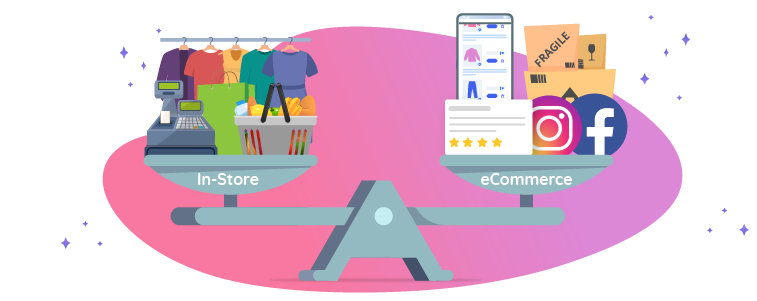
FAQs about online retail vs eCommerce
If you want to know more about retailers and eCommerce, we have answered some commonly asked questions by our readers.
Yes. It’s, in fact, the largest online retailer in the world, worth 1.98 trillion USD today, according to Amazon.com Inc.
E-tail is short for electronic retail which focuses on the businesses-to-consumer (B2C) model. Whereas eCommerce encompasses B2C and other business models, including consumer-to-consumer (C2C), direct-to-consumer (D2C), consumer-to-business (C2B), and finally, business-to-business (B2B) markets.
An online store is a website or platform where businesses sell their products or services to customers over the Internet. They offer a more personalised experience tailored to specific audiences.
ECommerce is a broader term that facilitates all types of commercial transactions conducted electronically. These offer more generic shopping experiences with various products catering to multiple audiences.
Short answer: yes. If you want to sell products online, you will need to have an eCommerce website. Your eCommerce website would have to be complete with features like product images, descriptions, a cart, and payment processing setup, among other things.
It depends. Most consumers agree with the experience of shopping at brick-and-mortar stores since they get to experience the product and store with all their senses. Furthermore, consumers can try out products, and taste samples and use testers to determine whether something is worth buying. They can also interact with staff, ask questions, and share the shopping experience with friends.
On the other hand. ECommerce is better than retail when it comes to spending and effort. It’s more cost-effective and saves you time thanks to lower overhead costs, faster transactions, seamless checkouts, and automated processes.
Business-to-customer (B2C) is the most rewarding business model, especially if your business wants to sell directly to the end users. It’s the most used business model in eCommerce and simply means you’re selling directly to consumers online.
All signs are pointing towards eCommerce being at the forefront of retail in the future. For starters, eCommerce is leading the dramatic transformation in the retail landscape, growing two to five times faster since 2020. ECommerce is undoubtedly a significant part of retail’s future, driven by technological advancements and changing consumer behaviour.
Final thoughts on eCommerce vs retail
Well, there you have it. While the jury might still be out on whether the differences between retail and eCommerce are completely unbridgeable, a case must be made for using the best of both to your advantage.
Of course, some industries work better on this premise than others. If you’re selling clothes online or selling food online, your approach will be pretty different. Other factors, such as investment costs, operational fees, and risks, are also to be considered when deciding your best move forward.
The most important thing, however, is that you realise there is room for both models in today’s world. You simply have to figure out how eCommerce and retail can work together for your business.
Candice Sergeant is an experienced eCommerce Product Owner at Netcash, driving the growth strategy for SaaS e-commerce solutions in South Africa with global partner Ecwid by Lightspeed. Candice is skilled at uncovering opportunities to optimize the online presence and operations of startups and medium businesses across a range of industries.

Subscribe to our mailing list to learn about our new features and marketing tips & tricks.




